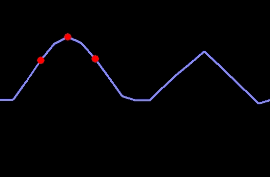Secure Sensing
 Autonomous vehicles are becoming ever more intelligent on account of a multitude of sensing modalities that are now available, making accurate perception and precise positioning readily available. However, the perception algorithms built on top of sensors such as radar, as well as the tracking algorithms of navigation signals, often fail to address the potential dangers of a malicious cyber-physical attacks. These attacks are conducted outside of the victim to either spoof or disrupt the physical fields being measured by each sensor. By exploiting the signal structure, adversarial actors can force vulnerable sensors to perceive false objects and return false measurements.
Autonomous vehicles are becoming ever more intelligent on account of a multitude of sensing modalities that are now available, making accurate perception and precise positioning readily available. However, the perception algorithms built on top of sensors such as radar, as well as the tracking algorithms of navigation signals, often fail to address the potential dangers of a malicious cyber-physical attacks. These attacks are conducted outside of the victim to either spoof or disrupt the physical fields being measured by each sensor. By exploiting the signal structure, adversarial actors can force vulnerable sensors to perceive false objects and return false measurements.
With careful design of such an attack, this falsified data may be indistinguishable from real data and can hide actual obstacles, derange a vehicle’s obstacle avoidance scheme, and potentially take entire control of navigation systems. Every year, these attacks become cheaper to implement in the field and an increasingly relevant threat. The risks are high: autonomous ground vehicles may be coerced into oncoming lanes of traffic, and urban air mobility aircraft may be unable to safely find a landing pad. By deeply understanding the potential avenues of attacks, our research in secure sensing seeks to design detection, estimation, and sensor fusion algorithms that not only mitigate but also detect malicious attacks, allowing autonomous systems navigate safely and with confidence.


